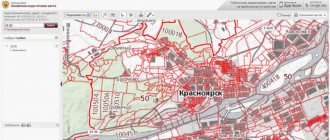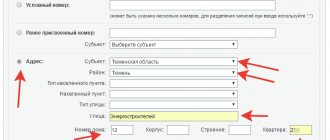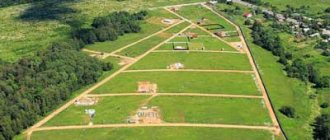Classification of land plots
Art. 7 of the Land Code distributes plots into the following legal statuses:
- agricultural land;
- forest fund land;
- land of specially protected objects and territories;
- land plots of settlements;
- water fund land;
- land plots that have a special purpose, including industrial.
The intended use of the land plot depends on the status of the allotment. Using the site for any other purpose is illegal.
Land plots for settlements may be intended for:
- for individual housing construction (IHC);
- for running your own subsidiary plot (LPH);
- for country house construction (DNP).
The legislation divides the areas allocated for agricultural activities into:
- on land that can be used for agricultural production (LPH);
- for land plots that are permitted to be used for gardening or horticulture (SNP, SNT);
- for land plots on which dacha construction is permitted (DNP).
The documentation for the site often indicates a specific purpose, for example, livestock farming.
Accounted status of the land plot
In this regard, the question is: how and on what basis can the status be changed? In practice, the task is to change the status of one land plot from “previously registered” to “cancelled”, and the other from “archived” to “registered” (however, such operations are not expressly provided for in clause.
We recommend reading: Certificate of a widow of a WWII participant
A certificate is issued based on the cadastral number of the plot. Status of the land plot: Previously registered. Peculiarities of the legal status of unfinished construction projects and the areas occupied by them. From 25,000 rubles per hundred square meters. Problems associated with obtaining a previously registered cadastral passport. in a historical place, 225 km from St. Petersburg. Purchase of previously registered Found: 22 acres, the owner has a certificate of ownership.
Individual housing construction (individual housing construction, including private household plots)
The owner of a land plot, which is located within the boundaries of a locality or city, has the same rights as city residents who live in houses that are under social and communal services.
The owner is not limited by the size of houses and land plots. But if a citizen has decided to build a cottage, he needs to coordinate the design of the future house with the relevant government agencies. In addition, such plots are subject to much higher taxes than DNP plots .
On the procedure for identifying copyright holders of previously registered real estate objects
The Rosreestr Office for the Sverdlovsk Region informs about changes in legislation in the field of state registration of rights and cadastral registration of real estate.
From June 29, 2021 a procedure will be carried out to identify the copyright holders of previously registered real estate objects. This opportunity is provided for by Federal Law No. 518-FZ of December 30, 2020 “On Amendments to Certain Legislative Acts of the Russian Federation.”
The essence: filling the Unified State Register of Real Estate (hereinafter referred to as the Unified State Register of Real Estate) with information about the copyright holders of previously registered real estate objects in order to involve them in civil circulation. Previously registered real estate objects are real estate objects, the rights to which arose before the date of entry into force of the Federal Law of July 21, 1997 N 122-FZ “On state registration of rights to real estate and transactions with it” (hereinafter referred to as Law No. 122-FZ) from 01/31/1998
On the territory of the Sverdlovsk region, local government bodies are empowered to take measures to identify the copyright holders of previously registered real estate in the following cases:
- if the title documents for the objects were drawn up before the date of entry into force of Law No. 122-FZ;
- if the rights to real estate are not registered in the Unified State Register of Real Estate.
“In 2021, 3,494 unused or ownerless land plots were identified in the Middle Urals. This is 429.3 hectares from which municipalities could collect taxes, sell or lease them. We work together with local governments. Our task is to identify squatters, as well as objects that are clearly in someone’s use, but this is not reflected in any register. Nobody knows where the boundaries of this land are; it has never been surveyed, coordinates have never been established. Several years ago, we implemented a pilot project to identify land rights holders in the territory of Sysert. It gave results, so the successful practice was extended to the entire region,” commented Igor Tsyganash, head of the Rosreestr Office for the Sverdlovsk Region.
The sequence of actions of local government bodies to identify the copyright holders of previously registered real estate (hereinafter referred to as the copyright holders) is defined in the new Article 69.1 of the Federal Law of July 13, 2015 N 218-FZ “On State Registration of Real Estate” (hereinafter referred to as the Registration Law) and includes the following stages:
Stage 1: Collection of information about previously registered real estate objects.
An analysis is carried out of the information available to the local government body, including archival ones, and sending requests to authorities, organizations that, before the date of entry into force of Law No. 122-FZ, carried out accounting and registration of rights to real estate (for example, BTI, Cadastral Chamber ), notaries, tax authorities, internal affairs authorities, the Pension Fund of the Russian Federation.
Stage 2: Preparation of a draft decision on identifying the copyright holder and sending it to the copyright holder, posting it on the municipal website and sending a copy of the draft decision to the person identified as the copyright holder.
Based on the results of activities and collection of information, the local government authority prepares a draft decision on identifying the copyright holder, the content of the project is defined in Part 6 of Art. 69.1 of the Registration Law.
A draft decision does not need to be prepared in the following cases:
– if responses to requests contain conflicting information,
– if the previously identified and recorded object is a building, structure, or an object of unfinished construction that has ceased to exist.
Stage 3: The local government body makes a decision to identify the copyright holder of a previously registered object if no objections are received within 45 days.
Stage 4: Submitting an application to enter information into the Unified State Register of Real Estate.
Within 5 working days from the date of making a decision to identify the copyright holder, the LSG body sends to the registration authority: applications for entering into the Unified State Register simultaneously information about a previously registered object and about the copyright holder, or an application for entering into the Unified State Register only information about the copyright holder, if information about the object ( cadastral/conventional number) are available in the Unified State Register of Real Estate.
Within the same period, a copy of the decision to identify the copyright holder is sent to the person identified as the copyright holder at the registration address, and if there is an email address, only by email.
In addition, local government bodies are given the right to carry out complex cadastral work in order to clarify the boundaries of land plots that are previously registered real estate objects, and to contact the registration authority without a power of attorney with a corresponding application for the implementation of state cadastral registration.
Land intended for gardening
Land plots that are used for gardening (SNP, SNT) are limited by the area of the plot and the house.
It is worth understanding that horticultural non-profit partnerships (NPP) and horticultural non-profit partnerships (SNT) have a slight difference. This difference is associated with the category of agricultural land and the category of allotments of settlements.
Lands of settlements are territories that belong to a village, town or village. Country real estate is also part of the city limits. Areas that have agricultural status are located tens of kilometers away. As a rule, such plots are “cut off from civilization.”
Clarification of boundaries
Current legislation provides for the need for land surveying, that is, establishing the exact boundaries of land plots. This is necessary for the completeness and correctness of the information entered into the register. Accordingly, lands whose boundaries are not established are necessarily subject to this procedure.
Why is this necessary? The fact is that if the boundaries are not established, then there is a risk of illegal seizure of the territory and use of the site by a person who does not have the right to do so. In addition, incorrect definition of boundaries entails incorrect calculation of land tax and other payments.
Land surveying is carried out by cadastral engineers. They go to the site and determine the exact boundaries of the site. In this case, adjacent plots and their parameters must be taken into account. Based on the results of the work, a boundary plan and an act on the compatibility and consistency of coordinates with neighboring land plots are prepared, and the data is entered into the Unified State Register of Real Estate.
The procedure can be started by contacting Rosreestr or MFC. To do this, you will need to prepare documents confirming the right to own the land.
Despite the fact that the presence of an earlier registered site presupposes the presence of information about it in the register, this does not always happen. When there is no information, a re-check and clarification of the boundaries of the territory is required.
The legislation establishes cases in which it is impossible to do without land surveying to establish boundaries:
- There is a complete lack of information about the land allotment in any registers.
- Low accuracy of existing information about the site in accordance with accepted standards.
In some cases, a simplified procedure is permitted. This is possible if the land area has not been adjusted over time. If there are any changes, you cannot do without surveying and coordinating the results with your neighbors.
What is the difference between DNP and individual housing construction?
In some cases, DNP plots may not be located on settlement lands. In this case, the main difference lies in registration in your own home. These lands were intended by legislators for the construction of country houses, where it is not possible to live the whole year. If a citizen builds, for example, a cottage on such a plot, then such construction will be declared illegal.
But some citizens still managed to register in such houses. To do this, they had to go to court and also conduct an examination that confirmed the suitability of the premises for permanent residence. On individual housing construction lands, services to citizens are provided at a more civilized level.
How can you find out the status of your own plot?
Now it’s quite easy to check the status of your land plot.
You don't even need to leave your home to do this. A citizen just needs to go to the official website of Rosreestr. This website contains a cadastral map, which contains all the information about land plots that are in the real estate cadastre. This electronic card allows you to find out the following information:
- location of land boundaries;
- cadastral number of the plot;
- category of allotment, as well as types of its use;
- the area of the plot, its cadastral value, as well as the form of ownership.
In addition, the map allows you to find out some information about the buildings that are located on your lands:
- cadastre number;
- the date on which the building was registered;
- cadastral value and area of the building;
- form of ownership, number of floors and even the material from which the walls were built;
- the date on which construction was completed;
- the date when the building was put into operation.
As you can see, the Rosreestr map allows you to find out not only the legal status of your land plot, but also a lot of useful information about the plot. But, unfortunately, such information is for reference only. They cannot be used as a document.
The status of a land plot previously taken into account: what does it mean?
- Individual site number
- Time (date) when the data was entered
- Site location: Syzran, st. Lugovaya, 25
- Land category: lands of settlements
- Purpose: Individual housing construction
- Area: 500 sq. m.
- Cost of the plot (according to cadastral data)
- Cost per 1 sq. m.
- Information about the person to whom the plot is allocated
When contacting the cadastral chamber office to obtain information about a land plot in the form of an extract or passport, an unfortunate situation may occur in which the specialists of this body will not be able to provide you with any information. This situation occurs due to the failure to include information about the site in the database. It can be fixed.
What other site statuses are there?
Land plots can also be assigned the following statuses:
- “temporary” - this status is assigned to plots, information about which has just been entered into the real estate cadastre;
- “registered” – areas that have received state registration are assigned this status;
- “previously registered” – this status is acquired by plots for which ownership rights arose before March 2008.
- “archival” - this status is given to plots withdrawn from civil circulation;
- “cancelled” – if within 5 years after the assignment of “temporary” status the allotment does not undergo state registration, it receives “cancelled” status.
Video conference by Sukhorukova
Previously registered land plot - what does this status mean?
Through the efforts of the territorial divisions of the then department of Roszemcadastre, as well as bodies of all levels and directions of government, including contracting organizations, information was summarized, land inventories were approved and created. Then Law No. 211 of July 24, 2007 “On the State Real Estate Cadastre” was adopted.
We recommend reading: Is it possible to register real estate for a child?
Obtaining information from the cadastre by interested parties became possible only after large-scale work on the inventory of land in the country. The list of persons entitled to request information was known in advance: owners, tenants, landowners.











